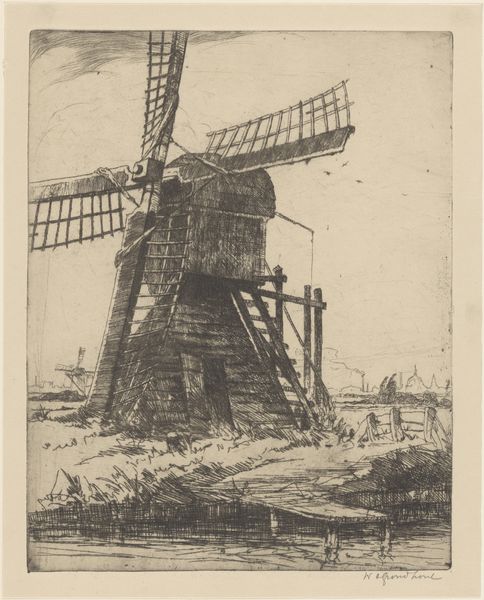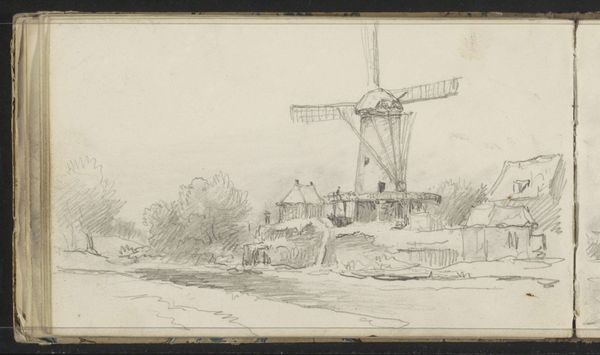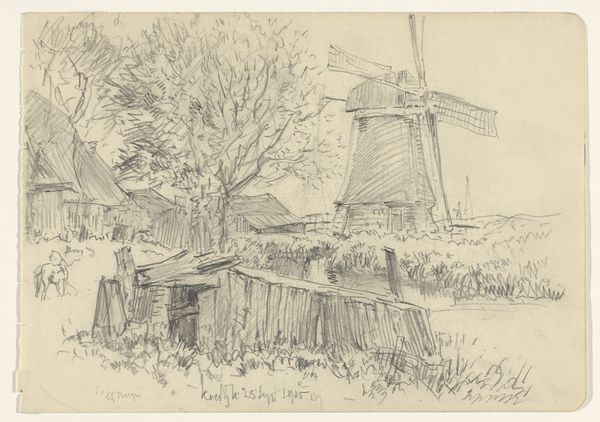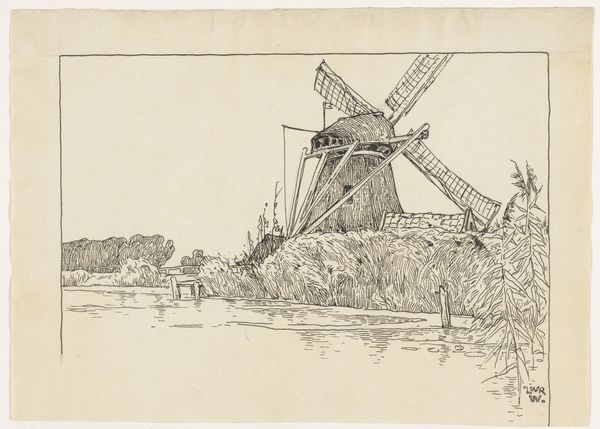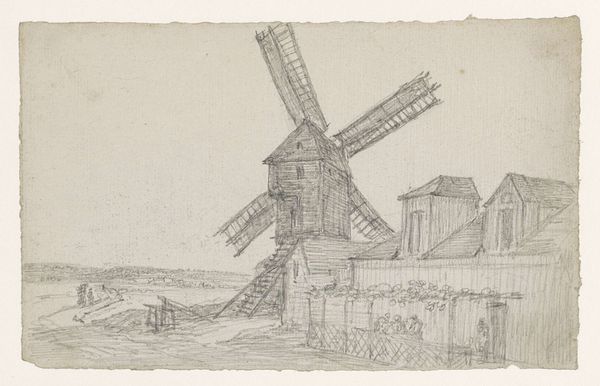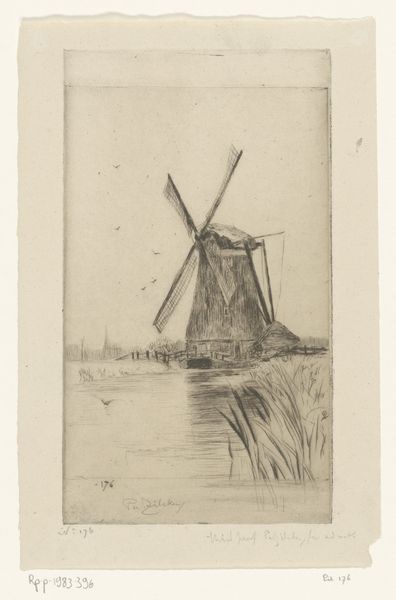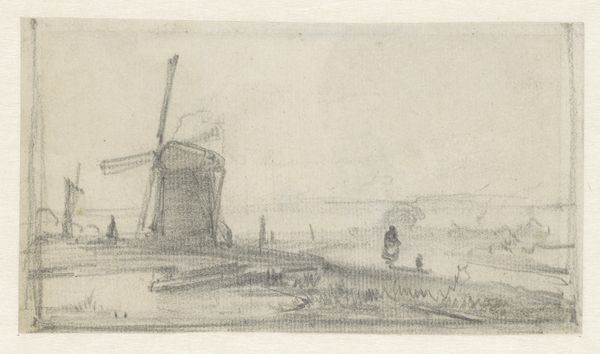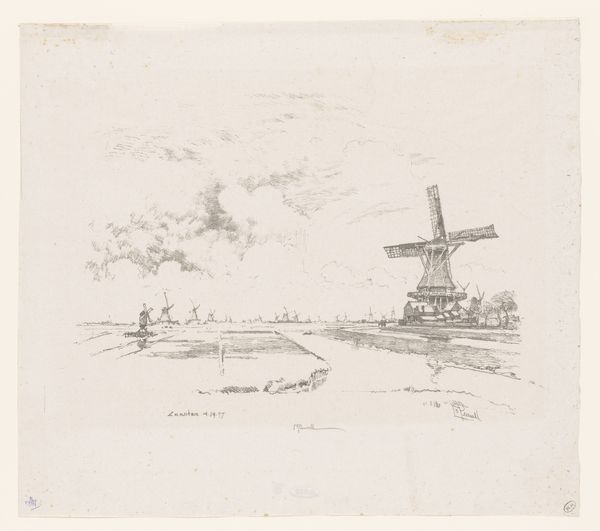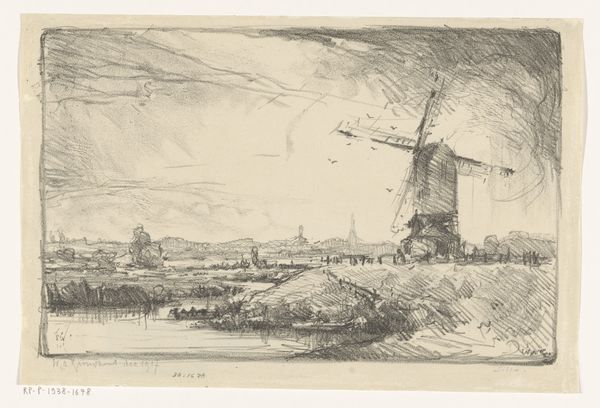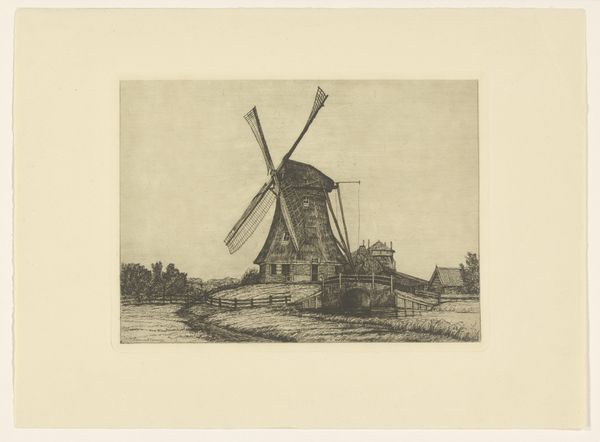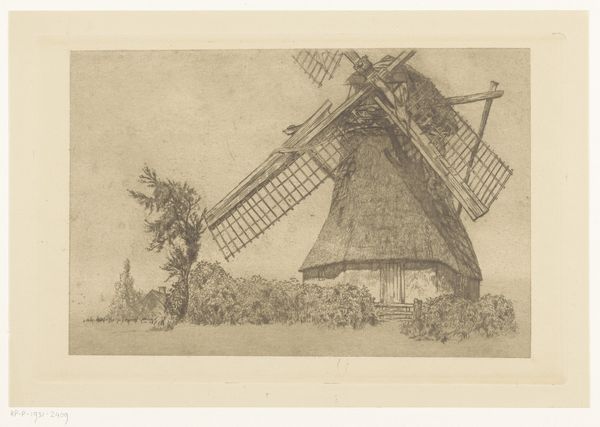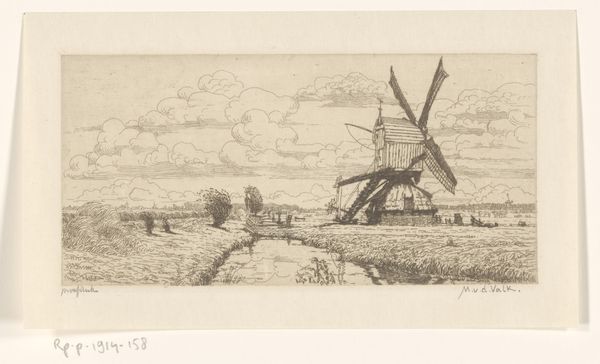
drawing, pencil, graphite, architecture
#
drawing
#
pencil sketch
#
landscape
#
pencil
#
graphite
#
architecture
Copyright: Public Domain
Curator: Welcome. Here we have Wilhelm Busch’s pencil drawing, “Dutch Windmill,” likely created between 1865 and 1870. It's currently held in the Städel Museum. Editor: It's delicate, isn't it? A real study in line and form. The windmill dominates, its skeletal frame contrasting with the softer, sketched landscape. Curator: Windmills, you know, have always been about power, particularly for the Netherlands—they’re these massive engines facilitating land reclamation, and emblems of industrial might within a small nation constantly battling against nature. Editor: True, but stripped down like this, in graphite on paper, we see only the essential geometry. Observe how the strokes mimic the windmill’s texture and structure. The layering suggests volume without the need for color. It becomes a very elemental visual statement. Curator: Exactly. And thinking about the late 19th century, it makes me wonder what Busch was attempting to convey by portraying something that had massive geopolitical and cultural significance within Europe through these quiet, almost sparse lines? Editor: It's fascinating how he reduces a functioning monument to pure, graphic representation. It becomes a self-referential commentary on drawing itself. There's almost a tension, isn't there, between function and representation? Curator: Definitely, that tension reflects the transformations happening in broader society as well. Think about the rural displacement in Germany, the rise of nationalism... Maybe it's a meditation on what industrial progress really means, presented through the simple symbolism of a landmark at risk of being left behind. Editor: Perhaps it's a way to reclaim those structures, but instead of in a socio-political way, on the pictorial surface. In the end, regardless of intention, there’s a strange serenity in this piece; the minimalist style and precision creates a captivating interplay between its symbolic presence and fragile rendering. Curator: A lovely paradox to ponder indeed. Editor: Agreed.
Comments
No comments
Be the first to comment and join the conversation on the ultimate creative platform.
